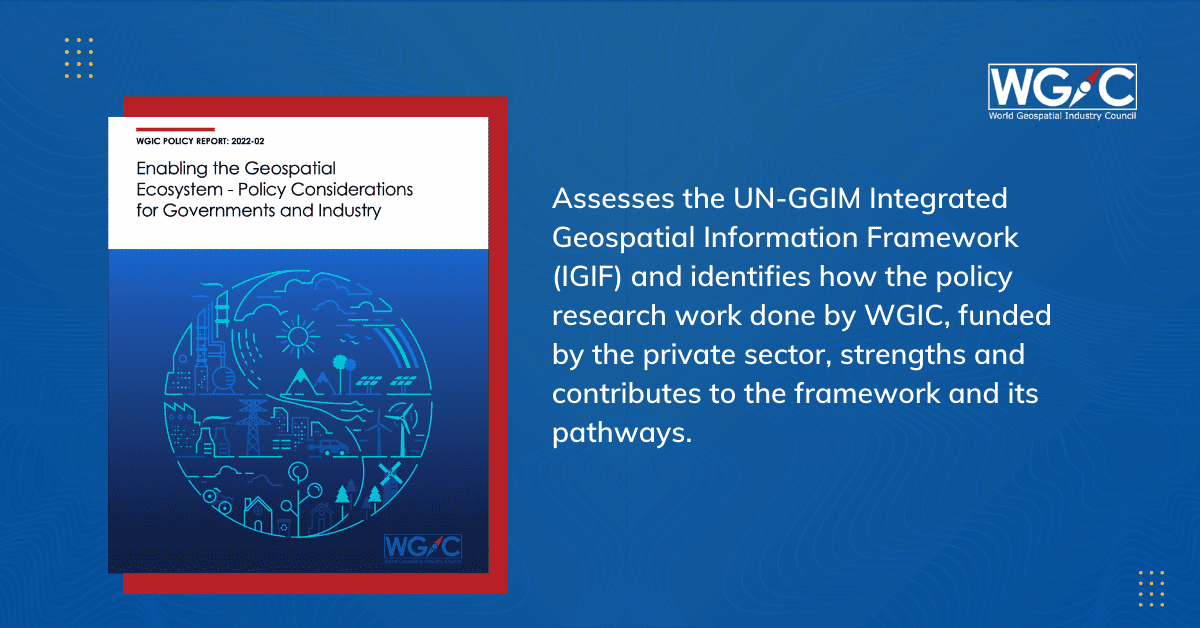The World Geospatial Industry Council (WGIC) at the Second United Nations World Geospatial Information Congress, released a report, “Enabling the Geospatial Ecosystem – Policy Considerations for Governments and Industry,” that demonstrates WGIC’s commitment to ensuring that the most up-to-date technologies and services are understood, accessible, and utilized by all stakeholders for harnessing the power of location-based data in the service of the United Nations Sustainable Development Goals (UN SDGs).
The geospatial community is conscious of the geodata-enabled future. These developments entail that even the slightest change in the physical environment will not remain unnoticed and will be measured directly through sensors or indirectly through remote sensors. Taking these considerations into account, UN-GGIM (United Nations Committee of Experts on Global Geospatial Information Management) developed the Integrated Geospatial Information Framework (IGIF) to provide strategic guidance to assist the development and implementation of country-specific action plans for managing all geospatial information in an integrated and inclusive manner.
WGIC’s report assesses the UN-GGIM’s IGIF and identifies the pathways that benefit from the WGIC’s body of knowledge. For example, in the last four years, WGIC has conducted policy research and published reports on
- geospatial data economy,
- data privacy issues,
- resilient infrastructure,
- public-private partnerships,
- geospatial Al (GeoAl),
- digital twins, and
- monitoring greenhouse gas monitoring from space.
Since its inception, WGIC’s objective has been to facilitate the exchange of knowledge within the geospatial ecosystem and share their perspectives with all stakeholders (e.g., governments, private companies, multilateral agencies). The recent report clearly demonstrated the alignment of WGIC’s policy advocacy with UN-GGIM IGIF strategic pathways – Policy and Legal, Innovation, and Financial. This can also be recognized through the visual below.

Key Recommendations from WGIC
We observe that technology innovation and its adoption have been happening somewhat independently through markets. Considering this misalignment, the paper presents WGIC’s recommendations for governments and industry based on the various WGIC reports in three groups:
- Agile policy making: The pace of technology change requires agile policy-making approaches that engage all stakeholders to share responsibilities for safe implementations.
- Enabling innovation through data: Leveraging the pervasive digitization to achieve the best possible outcomes for everyone and effective IGIF implementation.
- Intellectual property (IP) perspective: Identifying gaps in the current IP and recommending solutions that would enable new business models to help realize the potential impact of innovations.
Through this policy paper, WGIC calls for collaboration and knowledge exchange within the geospatial ecosystem for the success of IGIF. The report reiterates that no single geospatial entity can implement IGIF alone. It requires all stakeholders to collaborate towards the defined common goals.
https://wgicouncil.org/wp-content/uploads/2023/11/WGIC-Policy-Report-2022-02-IGIF-Pathways-3-1.pdf
The original content of the blog post is sourced from the WGIC policy paper “Enabling the Geospatial Ecosystem – Policy Considerations for Governments and Industry.”
Editors of the blog: Margarita Dadyan and Bhanu Rekha from WGIC


